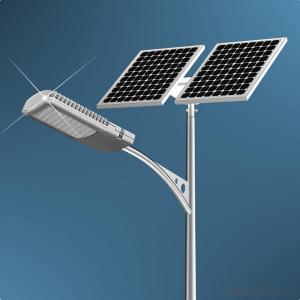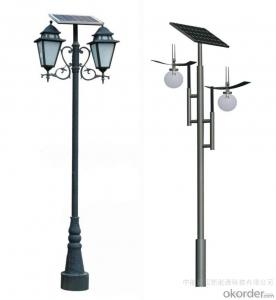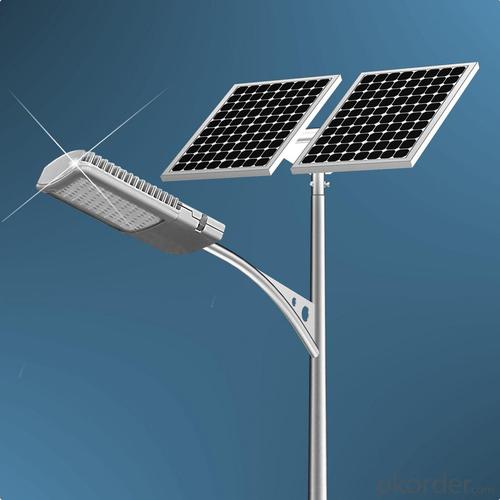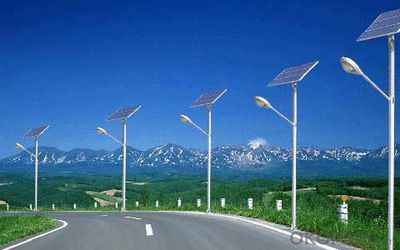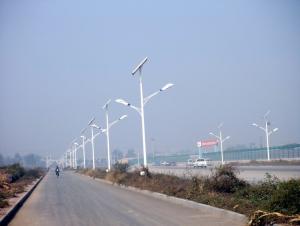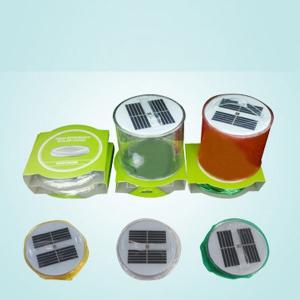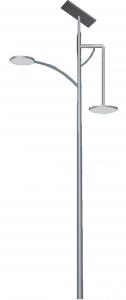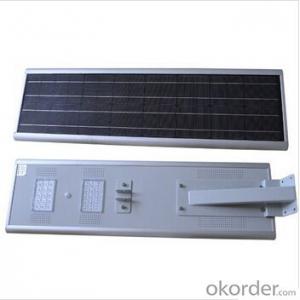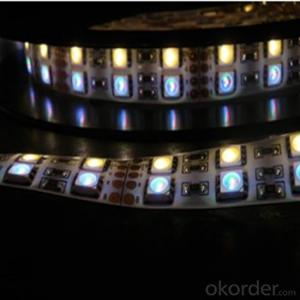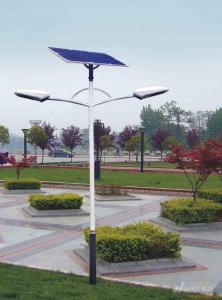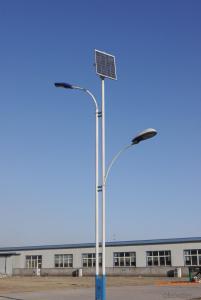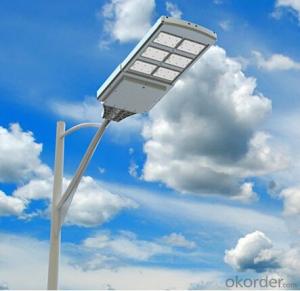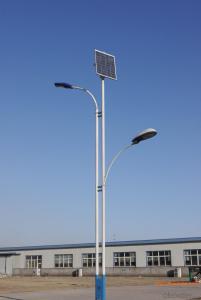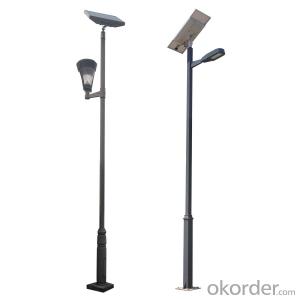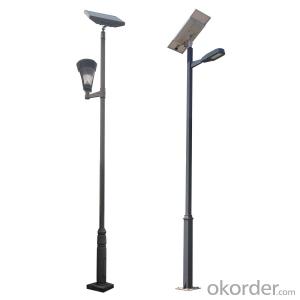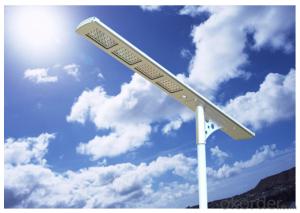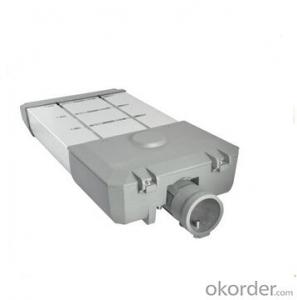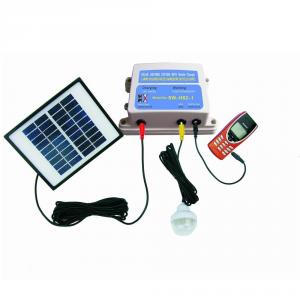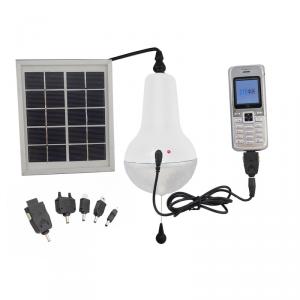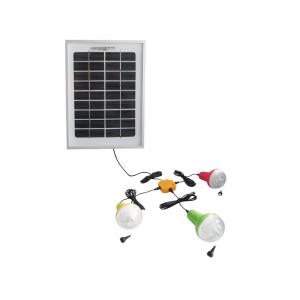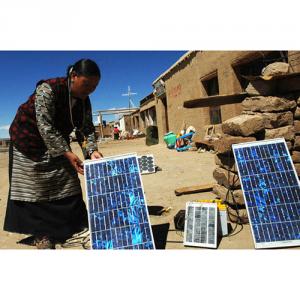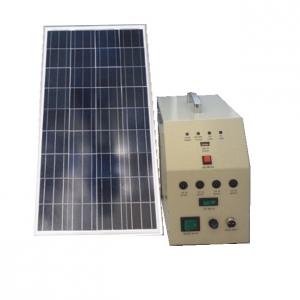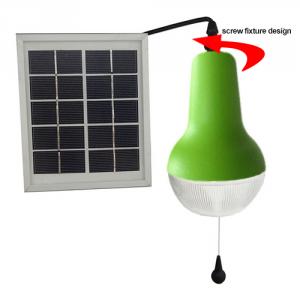Solar Light Fixtures Indoor:Solar Solar Street Light Environmental Friendly, Cost Saving, L9
- Loading Port:
- Shanghai
- Payment Terms:
- TT OR LC
- Min Order Qty:
- 1 pc
- Supply Capability:
- 5000 pc/month
OKorder Service Pledge
OKorder Financial Service
You Might Also Like
The first thing to figure out is the length of road in need of street lights. This can be a small entrance road only a couple hundred of feet long to miles of streets through an area. Does the area currently have any type of lighting available? What is the reason for needing street lights in this area?
Is the electrical grid already nearby or would you need to call in the power company to bring in electrical lines? If the electric needs to be brought to the area, how much is this going to cost? Depending on how far the grid electric is from the location of the needed lighting, this can be quite expensive.
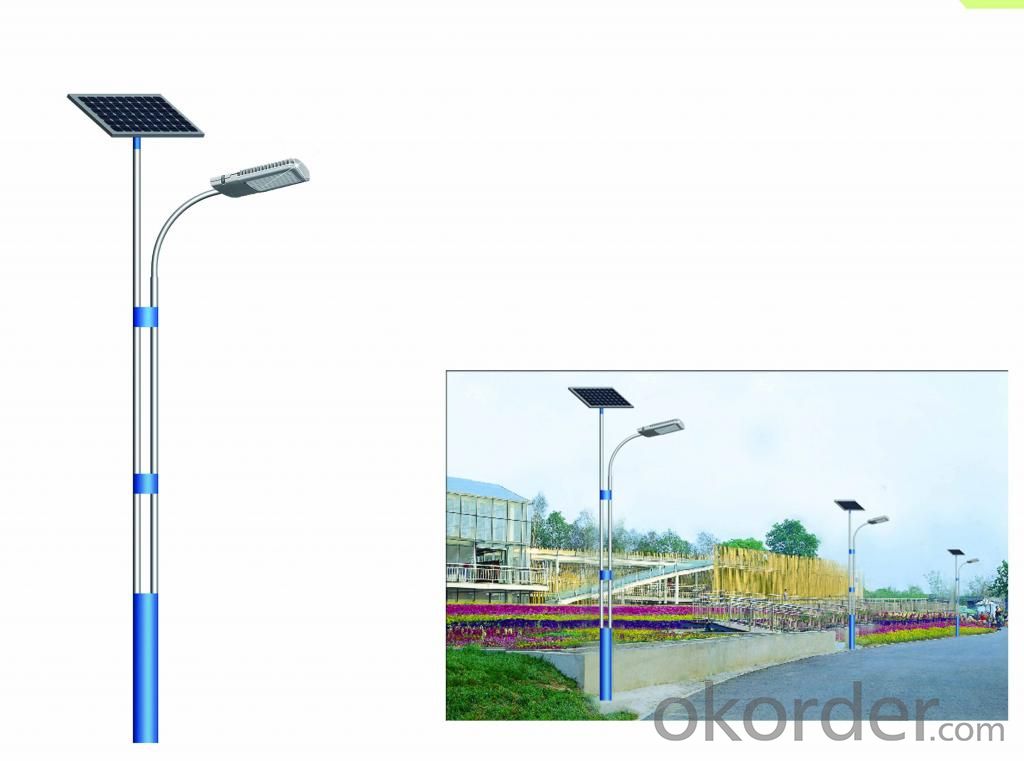
How much lighting is needed on the street? Do the lights need to be dark sky compliant? Do the street lights need to run from dusk to dawn or for only a specified number of hours at night? Are the street lights able to dim in the middle of the night and still provide enough lighting? These questions need to be answered before you can decide on how many lights you will need to complete the project.
Solar power street lights are an option to traditional electrical lights. Solar street lights do not need the electrical grid to be brought in as they are self-contained units that provide their own electric.The best lighting solution by using lower amounts of power, better optics, dimming features where needed, and cost less in an overall solution.
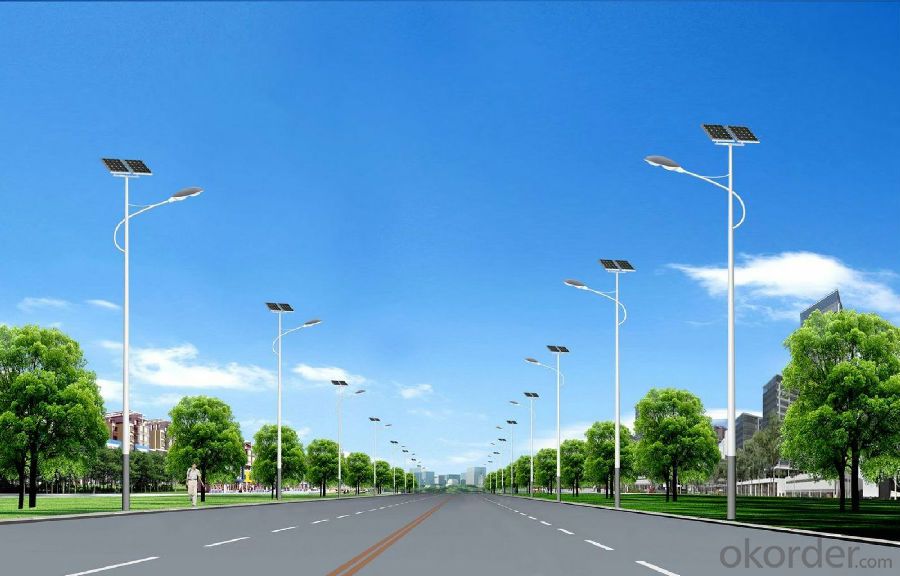
The last step after gathering the above information is to contact companies for quotes. Just like with anything else, get multiple quotes and weigh the pros and cons of every company and situation. The lowest quote is not always the best, so make sure to do your research on companies and products before you submit a purchase order.
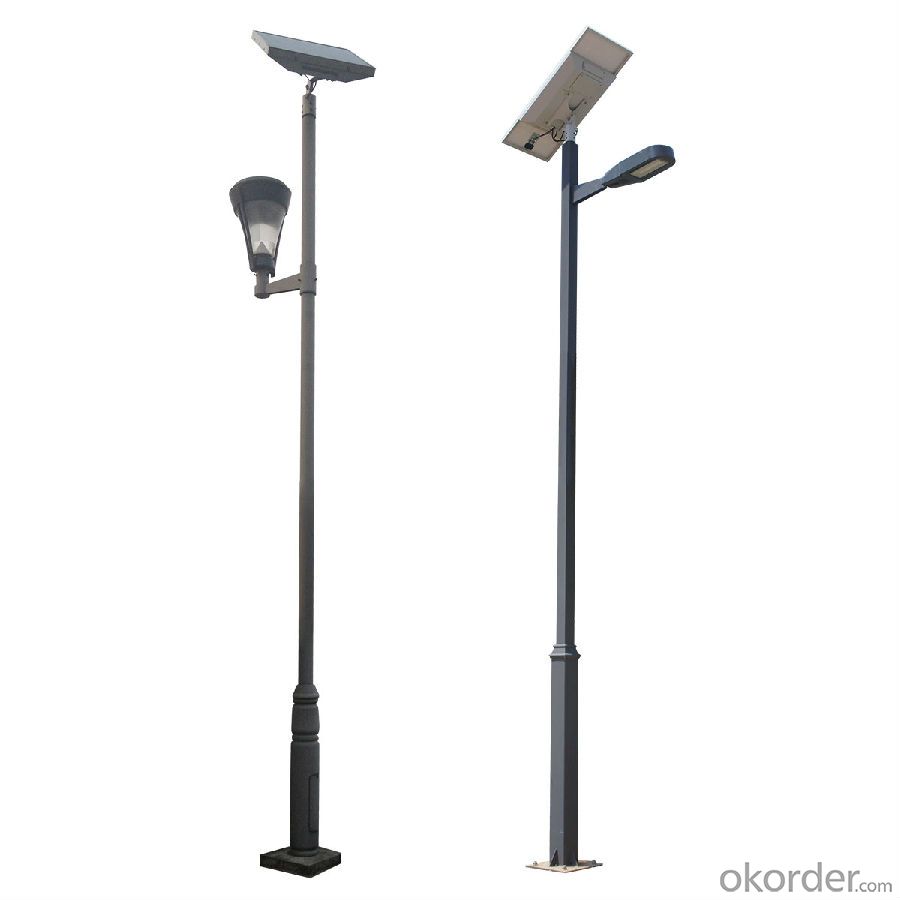
If you take your time, do your research, and gather needed requirements, your next street lighting project will be a success. Never be afraid to ask a lot questions, they may save you time and money in the long run.
- Q: How do solar lights provide illumination in remote areas?
- Solar lights provide illumination in remote areas by harnessing the power of the sun. They have photovoltaic panels that absorb sunlight and convert it into electricity, which is then stored in rechargeable batteries. When it gets dark, the stored energy powers LED lights, emitting bright illumination. This self-sustaining system eliminates the need for grid electricity, making solar lights an ideal solution for lighting in remote areas without access to reliable power sources.
- Q: The working principle of solar lamps
- Aluminum alloy lamp column is made of aluminum alloy, belong to the metal material, so the correct statement; B. nitrogen chemical nature is not lively, can be used for protection in the bulb, so the correct statement; C. organic synthesis materials must have three characteristics
- Q: Can solar lights be used on balconies?
- Yes, solar lights can be used on balconies. Since solar lights rely on sunlight to charge their batteries, balconies that receive adequate sunlight can be ideal locations for solar lights. They provide an eco-friendly and cost-effective solution for illuminating balconies without the need for electrical wiring or outlets.
- Q: Can solar lights be used for outdoor bus stops or shelters?
- Yes, solar lights can be used for outdoor bus stops or shelters. Solar lights are a sustainable and cost-effective solution for lighting up these areas, as they operate using renewable energy from the sun. They eliminate the need for a traditional electrical connection and are easy to install. Additionally, solar lights are low-maintenance and can provide reliable illumination throughout the night, enhancing safety and visibility for commuters using the bus stops or shelters.
- Q: How do solar lights handle electromagnetic radiation?
- Solar lights are engineered to effectively process electromagnetic radiation in a specific manner. The semiconductors composing the photovoltaic (PV) cells in solar lights are sensitive to light and are responsible for converting solar energy into electrical energy. These cells are meticulously crafted to absorb and transform visible light into electricity. Nevertheless, solar lights are not equipped to deal with alternative forms of electromagnetic radiation, such as radio waves or microwaves. These types of radiation lack the necessary energy to be efficiently converted into electricity by the PV cells. Consequently, solar lights remain unaffected by these forms of radiation and do not rely on them for power generation. It should be noted that solar lights can be vulnerable to extreme electromagnetic radiation, such as high-intensity electromagnetic pulses originating from lightning strikes or solar flares. Such occurrences have the potential to inflict damage upon the electrical components of solar lights, including the PV cells. However, these events are relatively infrequent, and solar lights are typically designed to endure normal levels of electromagnetic radiation without encountering any detrimental consequences. In conclusion, solar lights are purposefully designed to handle and convert the visible light spectrum into electricity. They remain impervious to other forms of electromagnetic radiation and do not utilize them for power generation.
- Q: Can solar lights be used to charge small electronic devices?
- Small electronic devices can indeed be charged using solar lights. Many solar lights are equipped with USB ports or adapters specifically designed for the direct charging of smartphones, tablets, and portable speakers. These solar lights feature a compact photovoltaic panel that effectively converts sunlight into electricity, which in turn powers the electronic device. It is worth noting, however, that the charging process may be slower compared to conventional methods due to its reliance on the availability of sunlight. Therefore, it is recommended to position the solar light in a location that receives abundant sunlight for efficient charging. Furthermore, it is advisable to verify the specifications and capabilities of the solar light to ensure compatibility with the particular electronic device being charged.
- Q: Can solar lights be used for building facades or architectural lighting?
- Yes, solar lights can absolutely be used for building facades or architectural lighting. Solar lights have become increasingly popular in recent years as a sustainable and cost-effective lighting solution for various applications. When it comes to building facades or architectural lighting, solar lights offer several advantages. Firstly, solar lights are easy to install and require minimal wiring, making them ideal for retrofitting existing buildings or adding lighting to outdoor spaces. They can be easily mounted on walls, roofs, or other structures, without the need for extensive electrical work. Secondly, solar lights are powered by sunlight, which means they do not require electricity from the grid. This makes them energy-efficient and environmentally friendly, reducing both energy consumption and carbon emissions. Additionally, solar lights can operate independently of the power grid, making them suitable for remote or off-grid locations. Furthermore, solar lights offer versatility in terms of design and functionality. They come in a variety of styles, shapes, and colors, allowing for creative and customized lighting solutions that can enhance the aesthetics of a building or architectural feature. Additionally, many solar lights offer programmable settings, allowing for dynamic lighting effects or timed schedules. Lastly, solar lights can provide consistent and reliable lighting throughout the night. Advances in solar technology have led to the development of more efficient and longer-lasting solar panels and batteries, ensuring that the lights can operate even in low-light conditions or during cloudy days. In conclusion, solar lights are a viable option for building facades or architectural lighting. They offer easy installation, sustainability, versatility, and reliable performance, making them a practical and eco-friendly choice for illuminating buildings and enhancing their visual appeal.
- Q: Can solar lights be used for camping trailers?
- Yes, solar lights can be used for camping trailers. They are a great eco-friendly and energy-efficient option for lighting up the interior and exterior of the trailer. Solar lights can be easily installed, require no wiring or electricity, and can provide sufficient lighting during camping trips.
- Q: How do I choose the right color temperature for solar lights?
- To select the appropriate color temperature for solar lights, there are several factors that should be taken into account. The warmth or coolness of the light emitted by the solar light is determined by its color temperature, which is measured in Kelvin (K). Here are some guidelines to help you make the right decision: 1. Purpose considerations: Think about the specific purpose of your solar lights. If you intend to use them for security or task lighting, a cool white or daylight color temperature (5000K-6500K) might be more suitable as it offers brighter and more focused light. For ambient or decorative lighting, warmer color temperatures (2700K-3500K) can create a cozy and inviting atmosphere. 2. Outdoor surroundings: Take into account the natural lighting and the colors present in your outdoor surroundings. If your outdoor area has abundant greenery, warm color temperatures can enhance the foliage and create a harmonious ambiance. Conversely, if you have a modern or contemporary outdoor space, cool white lights may complement the clean lines and sleek design. 3. Personal preference: Consider your personal preferences and the atmosphere you want to create. Warm color temperatures are generally more relaxing and soothing, while cool white lights can be energizing and provide a vibrant feel. Reflect on the mood you wish to establish and choose the color temperature accordingly. 4. Energy efficiency: Keep in mind that higher color temperatures tend to consume more energy. If energy efficiency is a priority, you may want to opt for solar lights with lower color temperatures as they generally require less power to operate. 5. Experiment and adjust: If you are uncertain about the ideal color temperature, consider acquiring solar lights that offer adjustable color temperatures. This way, you can experiment with different settings and find the one that best suits your needs and preferences. By taking these factors into consideration and making an informed decision, you can select the appropriate color temperature for your solar lights and create the desired ambiance for your outdoor space.
- Q: What are some common issues with solar lights?
- Some common issues with solar lights include insufficient sunlight exposure, degraded or faulty batteries, water damage, and poor build quality.
Send your message to us
Solar Light Fixtures Indoor:Solar Solar Street Light Environmental Friendly, Cost Saving, L9
- Loading Port:
- Shanghai
- Payment Terms:
- TT OR LC
- Min Order Qty:
- 1 pc
- Supply Capability:
- 5000 pc/month
OKorder Service Pledge
OKorder Financial Service
Similar products
Hot products
Hot Searches
Related keywords
